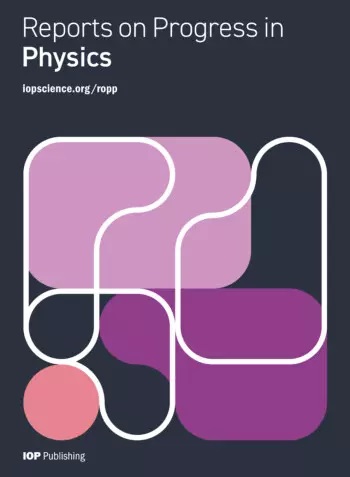等离子体光电探测工程:基本原理、设计策略与挑战。
IF 20.7
1区 物理与天体物理
Q1 PHYSICS, MULTIDISCIPLINARY
引用次数: 0
摘要
表面等离子体动力学研究材料中电子受光激发后的集体振荡和近场耦合下相关的倏逝波特性。由于近场增强、波长可调性和克服吸收波长的带隙限制等优点,表面等离子体被认为在光电子学中有广阔的发展前景。在过去的十年中,表面等离子体现象已被用于各种技术,例如光电探测器。本文讨论了等离子体的物理模型、波导的作用、载流子动力学和能量转移模式,特别是目前最先进的等离子体光电探测器的结构和工作原理,旨在深入探讨其潜在的机制。此外,我们还总结了等离子体光电探测工程中仿真技术和探测方法的最新进展。最后,我们介绍了等离子体增强光探测的最新进展、未来前景和仍然存在的挑战。本文章由计算机程序翻译,如有差异,请以英文原文为准。
Plasmonic photoelectric detection engineering: basic principle, design strategies and challenges.
Surface plasmonics studies the collective oscillations of electrons in materials following excitation by light and related evanescent wave properties under near-field coupling. Due to the advantages of near-field enhancement, wavelength tunability, and overcoming the band gap limitation on the absorption wavelength, surface plasmonics is considered promising for broad developments in optoelectronics. Over the past decade, surface plasmon phenomena have been used in various technologies, for example photodetectors. This review discusses the physical models, role of waveguides, carrier dynamics and energy transfer modes of plasmons, particularly the structure and working principle of state-of-the-art plasmon photodetectors, with the aim of delving into the underlying mechanisms. In addition, we summarize recent developments in simulation techniques and detection methods in plasmonic photoelectric detection engineering. Finally, we present the latest progress, future prospects and remaining challenges associated with plasmon enhanced photodetection.
求助全文
通过发布文献求助,成功后即可免费获取论文全文。
去求助
来源期刊

Reports on Progress in Physics
物理-物理:综合
CiteScore
31.90
自引率
0.00%
发文量
45
审稿时长
6-12 weeks
期刊介绍:
Reports on Progress in Physics is a highly selective journal with a mission to publish ground-breaking new research and authoritative invited reviews of the highest quality and significance across all areas of physics and related areas. Articles must be essential reading for specialists, and likely to be of broader multidisciplinary interest with the expectation for long-term scientific impact and influence on the current state and/or future direction of a field.
 求助内容:
求助内容: 应助结果提醒方式:
应助结果提醒方式:


